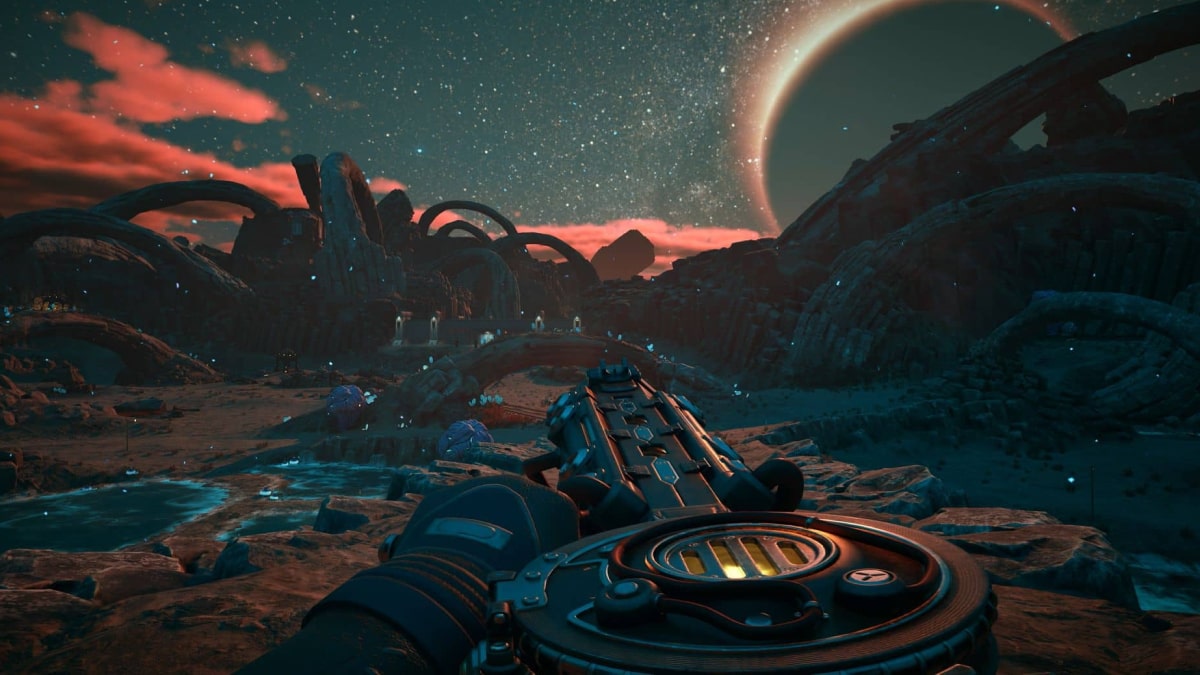You can trust VideoGamer. Our team of gaming experts spend hours testing and reviewing the latest games, to ensure you're reading the most comprehensive guide possible. Rest assured, all imagery and advice is unique and original. Check out how we test and review games here
Activision’s second Guitar Hero was originally released on the Xbox 360 with a guitar. Now that Guitar Hero III has been released, anyone already with a guitar has the option to buy GHII on its own. Read on for our thoughts on last year’s excellent port of the PlayStation 2 game.
Rhythm based games have been around for a long time, and peripherals aren’t a new thing, but there’s something about Guitar Hero that simply works, no matter what your age (within limits) or musical tastes. The fact that you need zero musical talent (something I’ve proved) is great, and after a few hours you’ll think you really can play the guitar, even though in reality you’re only pressing a few buttons in time to music.
In case you’re reading this wondering exactly what you do while playing Guitar Hero II, I better give a brief explanation. You hold a guitar that features a strum bar, five fret buttons, and a whammy bar. As a song is played a series of notes, long notes (sustains) and chords stream towards you, and you must hold the matching fret keys and strum in time with the music and with what’s happening on the screen. Playing single notes is obviously pretty simple, as are sustains, but chords (especially on Expert difficulty) are very tricky. The basic goal is to make it through each song, hitting as many of the notes and chords as possible.
How you’re performing is reflected in the Rock Meter, where green is excellent and flashing red is quite obviously bad, meaning you’re close to failing the song. Your score for the song will increase every time you successfully hit a note, and a series of successful notes will increase your score multiplier, giving you more points per note – failure to hit a note will drop this multiplier back to zero. You can also gain star power by hitting a series of star-shaped notes, and then raise the guitar in the air to activate a period of double scoring. It might sound a little complicated, but it all comes very naturally once you start playing.
Your first port of call will be the Career mode as it’s good fun and lets you unlock more songs for use in other game modes. Newcomers can set the difficulty to easy and work through the tunes without much of a problem, while more experienced players can challenge themselves on the harder difficulty settings. And boy, does it get hard. Even played on Hard, the vast majority of the tunes in the game are more difficult than tunes played on Expert in the first game – and the jump from one difficulty to another is really, really steep.
If you’re an experienced player then this is likely to be as much of a positive as it is daunting, but for newcomers who master Medium difficulty, the next step up is going to cause more than a few expletives and plenty of anger. In this sense, Guitar Hero II probably isn’t the right game for complete beginners, which is a shame as it’s the only option Xbox 360 gamers have. And, while it’s a close call, the original game probably has the slightly better track selection – a selection of tunes from the PS2 only original are available to download from Xbox Live Marketplace, for a price.
This is an area that will clearly be somewhat down to personal taste, but I think most people will find the track selection in Guitar Hero II to be slightly less memorable. It doesn’t disappoint in terms of numbers, as there are 48 licensed tracks from well-known bands (most of which are performed by sound-alikes) and another 26 from lesser-knowns. Despite my earlier ramblings about the track list, there are some real classics here, with the likes of Surrender, You Really Got Me, and Heart-Shaped Box, but there are also a few strange choices.
As well as a standard Face-Off mode, which pits you against another player, with each taking turns to play a section of the track at their own specified difficulty level, there are two other two-player modes. Pro Face-Off is similar, but sees each person playing every note in the song, and both must play at the same difficulty setting. The Cooperative mode is perhaps the most interesting, as one player takes lead while the other plays bass guitar or rhythm guitar. Your Rock Meter is shared and both players need to activate star power at the same time to use it, so working together is essential.
A number of training videos are available for complete novices, but the big new addition in this sequel is Practice mode. Here you can take any song that you’ve played and really nail the parts you have difficulty playing, with the game letting you play the same part over and over again. If that isn’t enough, you can even slow down certain parts in order to get the fingering sorted before moving on to the timing at full speed. It really is a great addition to the game, and something that die-hard Guitar Hero players will get a lot of use out of.
Owners of Guitar Hero II on the PS2 will be most interested in finding out what’s new in this Xbox 360 release, but sadly there isn’t all that much. The plastic guitar that comes with the 360 game (not included in the solus release) is the Gibson X-Plorer, which looks considerably more stylish than the standard SG model that PS2 owners have been playing with. It’s also worth pointing out that GHII on the Xbox 360 works brilliantly with the wireless guitar bundled with GHIII. The track selection is ten stronger than on PS2, online scoreboards are available and the visuals have been given a thorough makeover. Achievement point fans will also like the way the 1000 points have been spread out over the game, with many requiring some serious skills.
Minor quibbles with the soundtrack aside (it really is excellent, just not as excellent as the first game’s), Guitar Hero II is everything you’d want in a sequel to a rhythm-based game. It might be tailored more for experienced players than complete newcomers, but that’s not a bad thing, and the new multiplayer modes and practice options are excellent. By yourself there are few games that provide as much of a thrill, and when playing with friends Guitar Hero II reaches even greater heights, making it a must own game. It’s just a shame that this Xbox 360 release only offers slight improvements over the PS2 original.
/https://oimg.videogamer.com/images/f80d/guitar_hero_ii_2-27926.jpg)






